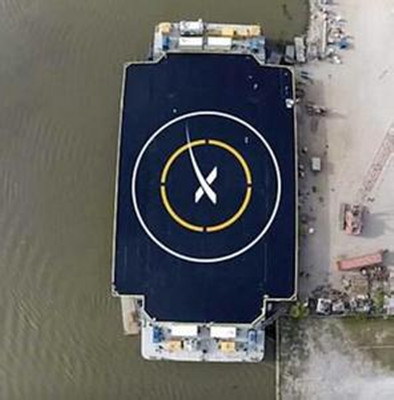Space,the final frontier, is also the most expensive one.
太空—這片最后未經開拓的領域,同樣也最為燒錢。
Reaching Earth orbit typically costs between ten-to twenty-thousand-dollars per kilogram.
通常到達地球軌道的成本是每公斤10萬至20萬美元。
That's because rocketry is the only form of transportation where you throw away your vehicle once you've reached your destination.
這是因為火箭是唯一的交通工具,而且一旦抵達目的地就會廢棄。
But that might change as soon as January of next year, when Space Exploration Technologies, also known as SpaceX, plans to launch a rocket into space, then bring the rocket's first stage back for a precision landing.
但是也許明年1月這種情況會有所改變,一家名為SpaceX的空間探索科技公司計劃將火箭發射到太空,而后使火箭第一級進行精準著陸。

After launching a payload on a resupply mission to the International Space Station,Space X's Falcon 9 first stage will deploy hypersonic stabilizing fins and fire its engines four times, steering itself to an upright touchdown on a robotic barge floating in the Atlantic Ocean.
將再補給任務的有效載荷發射至國際空間站后,SpaceX的獵鷹9號運載火箭第一級將展開高超音速穩定翼并且進行4次引擎點火,而后轉為自動操作在大西洋上的機器駁船垂直降落。
Think of a 14-story building moving faster than a kilometer per second.
想象一下一個14層的高樓時速每秒1公里移動的情景。
And now imagine slowing it down, balancing it on a jet of rocket exhaust and landing it with an accuracy of 10 meters on a target smaller than a football field.
現在再想象讓它慢下來,通過火箭排氣保持其平衡,最后10米內精準著陸在一個比足球場還小的地方。
It won't be easy—company representatives only give the precision landing 50–50 odds.
顯然這絕非易事—而公司代表認為此次精準著陸成功率只有一半。
But if successful, SpaceX's audacious test could soon lead to cheaper, fully reusable rockets that make the final frontier not quite so financially challenging.
但如果能夠成功,SpaceX公司這次大膽的實驗很快將帶來造價更為低廉、完全可重復使用的火箭,使這片最后的未開拓領域在經濟方面不再受到如此多困擾。












